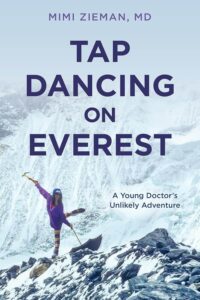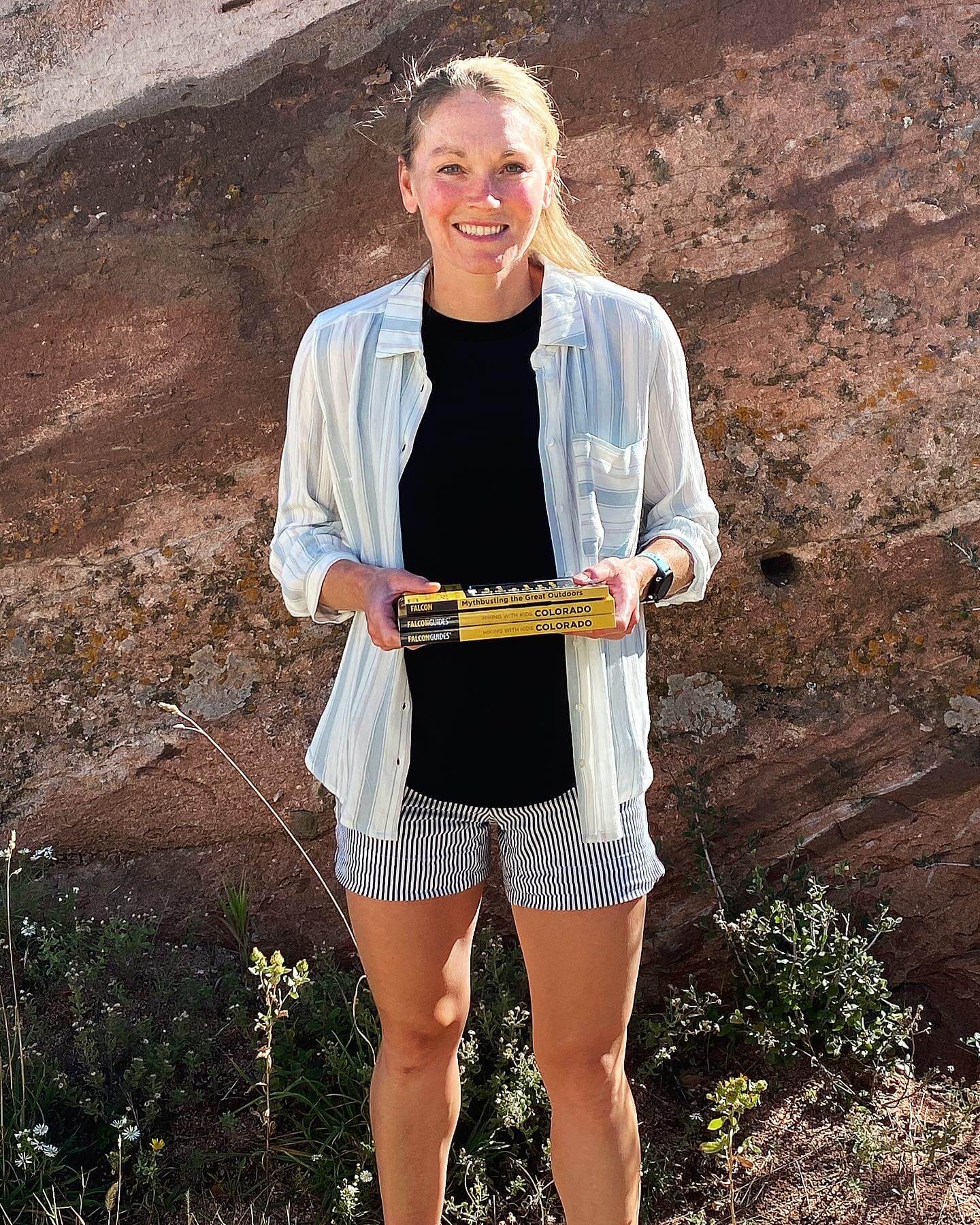Higher ground
A young doctor tests the heights in this account of her adventures leading up to and on Mount Everest
A young doctor tests the heights in this account of her adventures leading up to and on Mount Everest
On my most optimistic days, there’s a small part of me that thinks, “Yes! I should totally put Everest on my life list.”
Then I remember that my fingers turn white when I linger in the freezer aisle too long (Reynold’s syndrome) and, oh, there was also the time I had to turn back a half-mile from the summit of Mount Democrat, the shortest of four 14,000-foot peaks in the Decalibron Loop, because I was so green I could barely walk.

Mimi Zieman
If a Colorado 14er is a stretch, then this hiker might have to settle for reading others’ accounts of that infamous peak stretching 29,032 feet toward the heavens. A good place to start is with Mimi Zieman’s award-winning memoir Tap Dancing on Everest: A Young Doctor’s Unlikely Adventure. As the subhead promises, this particular account includes the kinds of incisive details only a physician can provide.
In 1988, then-25-year-old Zieman, who was still finishing med school, joined a months-long Everest expedition that took a small group up an uncharted route on the mountain’s remote East Face. As the medical officer, Zieman was the sole female presence among four climbers and a photographer.
The book opens with a harrowing scene set at Advanced Base Camp, back when permits to climb Everest were few and far between. “The landscape offered nothing,” and we see Zieman huddled up with the team’s photographer, peering through a telescope, trying to spot three climbers who have been missing in the mountain’s so-called Death Zone for a week. Zieman has all but given up hope. Nobody, after all, has ever survived more than three days in the Death Zone without supplemental oxygen. Since their purist ethos prohibited radios, too, the mountaineers are unreachable.
From here, the author abruptly retreats, taking readers to her childhood as the daughter of Jewish immigrants in New York City. It’s a linear journey back up the mountain, and while the back-cover blurb doesn’t lie—Zieman indeed writes “a true survival story about the risks we take to become our most authentic selves”—you’ll have to wait a few hundred pages to learn the outcome of the expedition that hooked you.
Luckily, the author’s upbringing and first expedition—a noteworthy solo trek on the Annapurna circuit—hold their own. The dangers of city living (drugs, prostitution) offered a young Zieman initial training for “the unknowns of Everest.” It was the author’s time away at college in Montreal, though, that primed her for hostile, high-altitude weather. Canadian winters were “[a] perfect curriculum in severe cold,” Zieman writes.
The narrative really picks up in chapters 4 and 5, when Zieman travels west of Pennsylvania for the first time to assist with field work at the Rocky Mountain Biological laboratory in Gothic, Colorado. While Zieman isn’t a local author, Colorado is where she discovered, and fell in love with, tall mountains.
Shortly after Colorado, Zieman’s first trip to Kathmandu includes accounts of interesting characters—Mark, the fruitarian from California, along with obnoxious Irene, a blonde sporting knee-high patterned yarn booties. After summiting Annapurna, Zieman meets Robert, who imbues the remaining narrative  with a subtle love story.
with a subtle love story.
How do you say you screwed your hiking partner without actually talking about sex? Despite in-depth accounts of gut issues, mountain top menstruation and frostbitten digits, Zieman is surprisingly shy about the romantic stuff.
But in many ways, Zieman’s book is an important feminist manifesto inspiring all women to forge their way up whatever mountain stands before them. Beyond liberation, Zieman dances across other big topics. Religion. Love.
I was skeptical. Could a doctor with no formal literary training write well enough to carry a 230-page book?
Zieman must have a knack for storytelling, and maybe some credit goes to her gripping life experiences. The daughter of immigrants and Holocaust survivors (her father’s story deserves its own book), Zieman is an accomplished doctor who has delivered triplets near the deepest ocean trench and tap danced through Broadway studios. She also raised three children, which is its own sort of adventure.
The author intuitively understands how to craft a compelling scene, and her detail-rich prose is oftentimes a pleasure to read, so realistic at points that you’ll feel like you’re sitting right there in Zieman’s childhood New York City apartment, watching her mother suck it all in while squeezing into a girdle.
Zieman’s mother explains, “You have to look your best!” And from that point on, the reader feels Zieman working with that phrase, kneading it like yeasty dough, as she navigates a series of high-altitude landscapes that ultimately bring her to the book’s ice-cold pinnacle.
The best part is the finale, or course, when we return to Everest and learn the outcome of the fateful expedition. Even if you don’t put down this book with a desire to tackle something as intense as Everest, Zieman’s narrative will make you want “[t]o veer off the trail of expectations …” I couldn’t finish and file this review fast enough—that’s how ready I was to get back outside exploring.
Based near Denver, Jamie Siebrase is a journalist and the author of several Falcon guidebooks, including Hiking with Kids Colorado, Exploring Colorado with Kids and Mythbusting the Great Outdoors. She’s currently writing a guided workbook for those interested in using nature to access emotional healing.
Click here for more from Jamie Siebrase.

